|
|
|
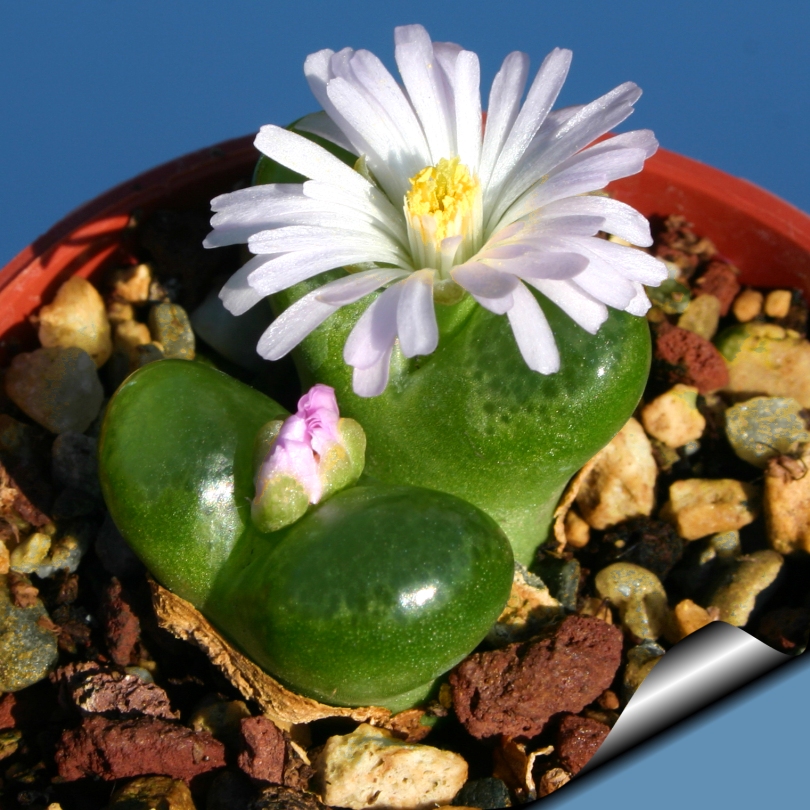
Ophthalmophyllum (Conophytum) limpidum SB1198 Tafelkop,
Achab, South Africa
This species has very handsome soft and shining green body.
|
|
 |
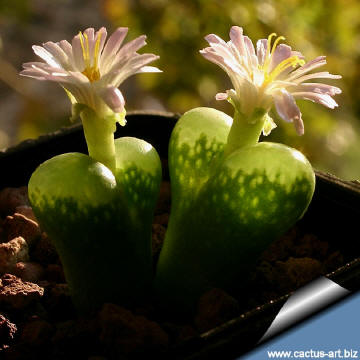 |
|
. |
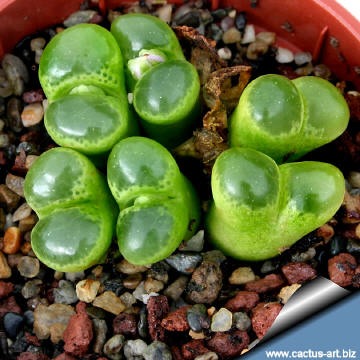 |
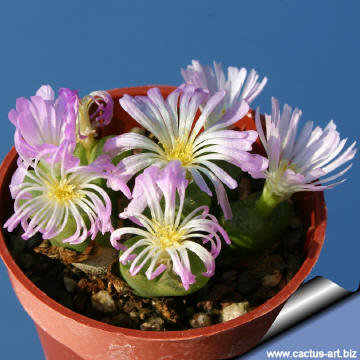 |
|
. |
 |
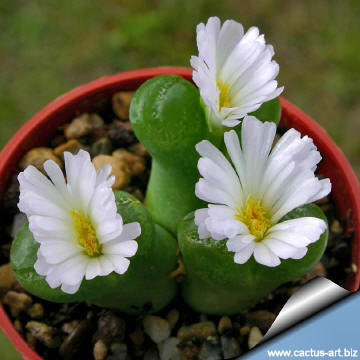 |
|
Remarks: They are partly
subterranean, with only the clear 'window'
in each leaf tip exposed above soil. A type of optical system exists
whereby a layer of apical tissue rich in calcium oxalate crystals acts
as a filter to intense sunlight before it reaches the thin
chlorophyllous layer below. They are also called
mimicry plants as they show a striking similarity to their
background rocks and are difficult to detect when not in flower. These
are the commonly known as pebble plants or living stones; each species
is associated with one particular type of rock formation and occurs
nowhere else. Its soil-embedded, subterranean growth form also reduces
the need for chemical defences against herbivores.
|
|


Advertising
|
|
|
|
|
Family: Mesebrianthemaceae
(Aizoaceae) Accepted
Scientific name: Ophthalmophyllum
limpidum
S.A. Hammer
in: Conophytum 1993:247
Subgenus Derembergia –
Ophtalmophyllum
Section OPHTHALMOPHYLLUM
Origin: South
Africa, Namaqualand. Type locality: Namiesberge
Habitat: It grows on quartz
slopes and on sheer faces, usually half shaded.
Synonyms:
|
Description:
It is a small
groundcover plant similar to a Lithops but with shiny green epidermis.
Good clumper.
Bodies (Leves): Up to 20 mm large, 8 mm tall (more in
cultivation) Nice, very smooth, glabrous, pale green, jade green or
shining grass-green, never reddened that go yellowish when stressed.
Leaves spotted at the margin and strongly windowed transparent at the
tips.
Flowers: White or (usually) pale to bright pink, cherry scented
with yellow stamens.
Blooming season: Autumn.
Fruit: 5-6 locular.
Remarks: It is the glassiest and mostly densely branched member of
Conophytum/Ophtalmophyllum, with the shortest papillae.
Conophytum/Ophtalmophyllum:
These plants forms a group within the large genus
Conophytum
and for a long time they was considered a separate genus,
Ophthalmophyllum.
Generally the Ophthalmophyllums look like they
are formed from glass, ranging in colour from coke-bottle green to
brown, to quite reddish. Some of these plants remain solitary, others
clump quite readily; some are touchy in cultivation, some grow easily.
They all resemble each other and are easy to recognize as a group. They
include species such as
C. friedrichiae,
C. limpidum, the slightly fuzzy C. pubescens, and the
clump forming C. praesectum.
|
|
|
|
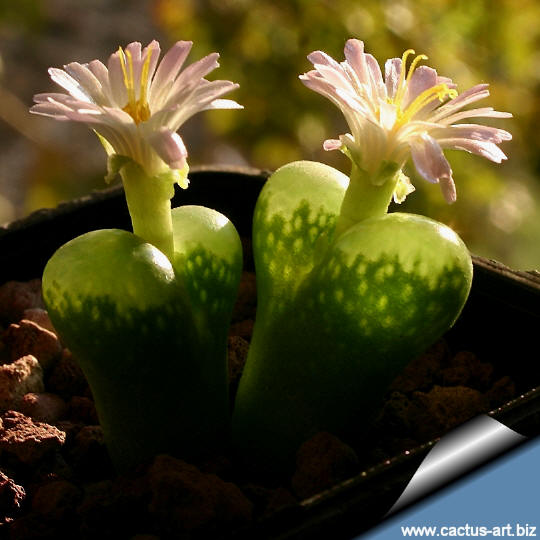
Ophthalmophyllum (Conophytum) limpidum
SH385 Achabseberg.
In backlighting to show the transparent windowed body
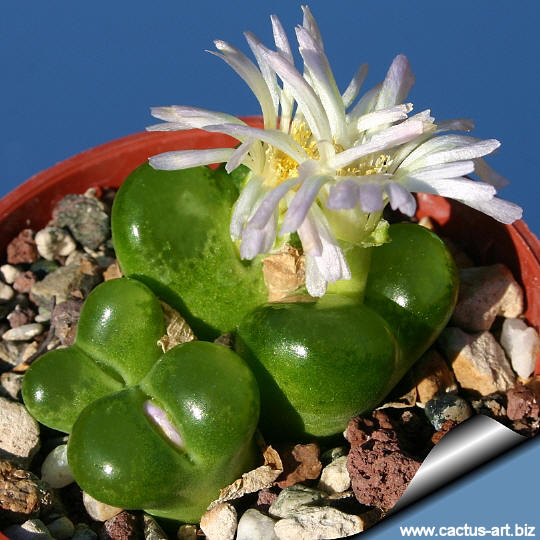
Cultivation: It is relatively easy to grow. These plants grow on
winter rain and head for summer dormancy. The
growing season in northern hemisphere is from September to March.
They require little water; otherwise its epidermis breaks (resulting in
unsightly scars). Water minimally in summer, (only occasional
misting when the plant starts shrivelling), but it
will generally grow even in summer if given water. Water regularly in
winter after the previous year's leaves have dried up. Requires good
drainage. It enjoy some
shade (avoid direct sun as it grows wild among rocks and under the shade
of other plants) and in summer it need to be kept in a cool area.
Hardy to -2°C.
Ensure a very good ventilation. Avoid to repot frequently. This plant
may stay in the same pot for many years. Plants grown in larger
containers have frequently relatively poor flowers. It might improve
when the plants are given their own, small individual pots.
Propagation: It can be
reproduced both by cuttings and seeds. Take the cutting from a grown-up
mother plant. Each
cutting must contain one or more heads along with
a fraction of root.
|
|